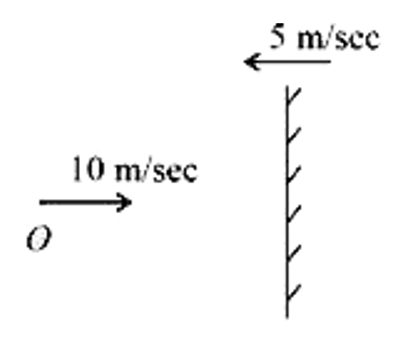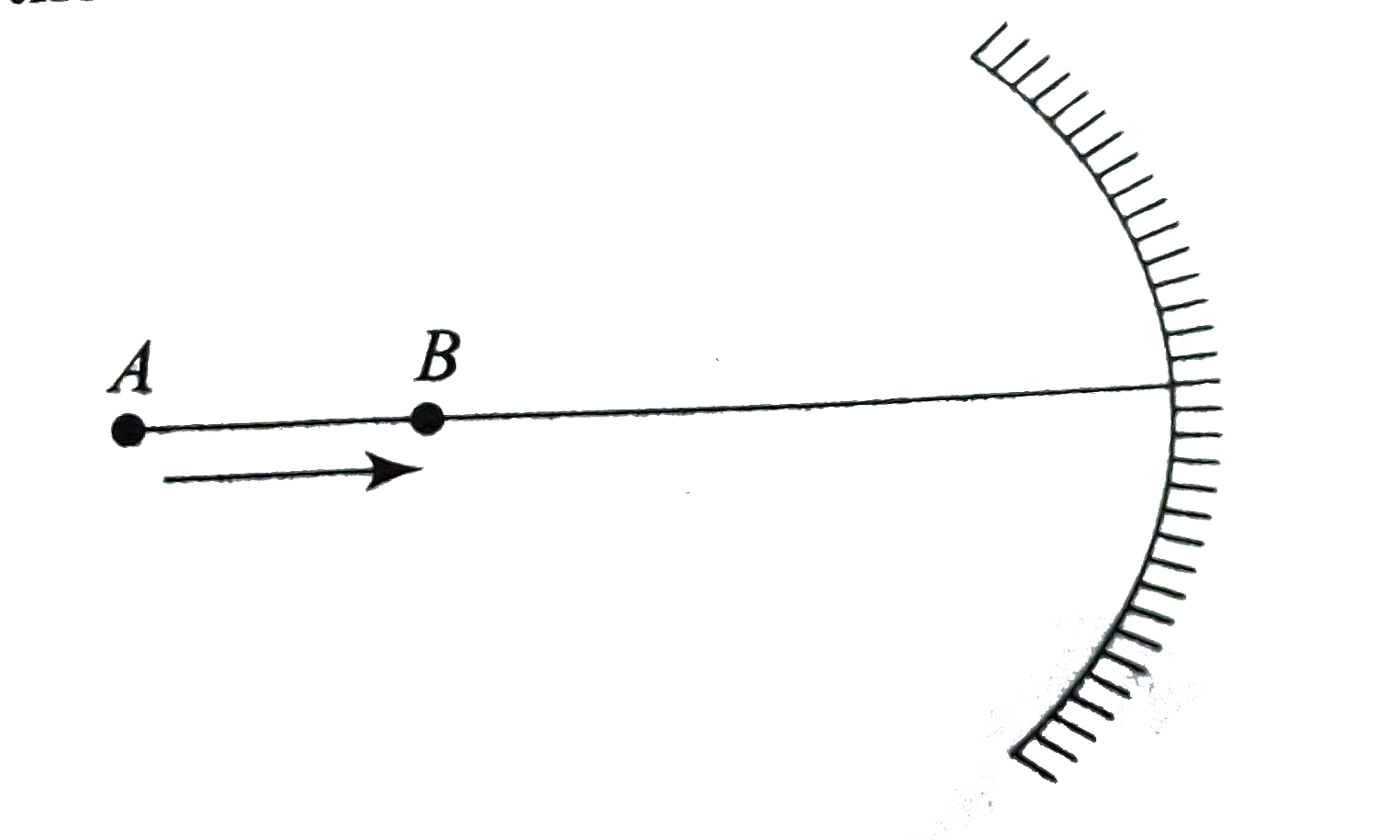A real object is moving toward a fixed spherical mirror. The image
must move away from the mirro
may move away from the mirror
may move toward the mirro if the mirror is concave
must move toward the mirror if the mirror is convex
The correct Answer is:b.,c.,d.
To solve the problem of how the image behaves as a real object moves toward a fixed spherical mirror, we need to consider the nature of the mirror (concave or convex) and the relationship between object distance, image distance, and focal length.
1. Identify the Type of Mirror:
- Determine whether the mirror is concave or convex. This will dictate the behavior of the image as the object approaches the mirror.
2. Understanding Object Distance (u):
- The object distance (u) is the distance from the object to the mirror. As the object moves closer to the mirror, the value of u decreases (it becomes more negative in the sign convention).
3. For a Concave Mirror:
- If the object is beyond the focal point (f), the image is real and inverted. As the object approaches the mirror (u decreases), the image moves away from the mirror.
- If the object distance becomes less than the focal length (u < f), the image becomes virtual, upright, and appears to move toward the mirror.
4. For a Convex Mirror:
- Regardless of the object distance, the image formed by a convex mirror is always virtual, upright, and located behind the mirror. As the object approaches the mirror, the image moves from the focus toward the pole of the mirror.
5. Conclusion:
- For a concave mirror, the image will move away from the mirror if the object is beyond the focal point, and will move toward the mirror if the object is within the focal point.
- For a convex mirror, the image will always move toward the mirror as the object approaches.
Final Answer:
- If the mirror is concave, the image may move away or toward the mirror depending on the object's distance relative to the focal length. If the mirror is convex, the image will always move toward the mirror.
- Determine whether the mirror is concave or convex. This will dictate the behavior of the image as the object approaches the mirror.
- The object distance (u) is the distance from the object to the mirror. As the object moves closer to the mirror, the value of u decreases (it becomes more negative in the sign convention).
- If the object is beyond the focal point (f), the image is real and inverted. As the object approaches the mirror (u decreases), the image moves away from the mirror.
- If the object distance becomes less than the focal length (u < f), the image becomes virtual, upright, and appears to move toward the mirror.
- Regardless of the object distance, the image formed by a convex mirror is always virtual, upright, and located behind the mirror. As the object approaches the mirror, the image moves from the focus toward the pole of the mirror.
- For a concave mirror, the image will move away from the mirror if the object is beyond the focal point, and will move toward the mirror if the object is within the focal point.
- For a convex mirror, the image will always move toward the mirror as the object approaches.
- If the mirror is concave, the image may move away or toward the mirror depending on the object's distance relative to the focal length. If the mirror is convex, the image will always move toward the mirror.
Topper's Solved these Questions
- GEOMETRICAL OPTICSBOOK - CENGAGE PHYSICS ENGLISHCHAPTER - GEOMETRICAL OPTICSEXERCISE - Assertion-Reasoninig
2 Videos
- GEOMETRICAL OPTICSBOOK - CENGAGE PHYSICS ENGLISHCHAPTER - GEOMETRICAL OPTICSEXERCISE - Linked Comprehension
51 Videos
- GEOMETRICAL OPTICSBOOK - CENGAGE PHYSICS ENGLISHCHAPTER - GEOMETRICAL OPTICSEXERCISE - Subjective
26 Videos
- ELECTRON,PHONTS,PHOTOELECTRIC EFFECT & X-RAYSBOOK - CENGAGE PHYSICS ENGLISHCHAPTER - ELECTRON,PHONTS,PHOTOELECTRIC EFFECT & X-RAYSEXERCISE - dpp 3.3
15 Videos
- HEATING EFFECT OF CURRENTBOOK - CENGAGE PHYSICS ENGLISHCHAPTER - HEATING EFFECT OF CURRENTEXERCISE - Thermal Power in Resistance Connected in Circuit
27 Videos
Similar Questions
A point object is placed at a distamce of 10 cm anad its real image is formed at a distance of 20 cm from a concave mirror. If the object is moved by 0.1 cm towards the mirror. The image will shift by about
View SolutionAn object is moving towards a stationary plane mirror with a speed of 2 m/s. Velocity of the image w.r.t. the object is
View SolutionAn object is moving towards a converging lens on its axis. The image is also found to be moving towards the lens. Then, the object distance u must satisfy
View SolutionAn object is moving towards a moving mirror as shown in the figure. Find speed of image with respect to ground in m/sec.

View SolutionA point object is placed at a distance of 10 cm and its real image is formed at a distance of 20 cm from a concave mirror. If the object is moved by 0.1 cm towards the mirror, the image will shift by about
View SolutionA linear object AB is placed along the axis of a concave mirror. This object is moving towards the mirror with speed U. The speed of the image of the point A is 4U and the speed of the image of B is alSO 4U btu in opposite direction. If the center of the line AB is at a distance L from the mirror then find out the length of the object.

View SolutionA real object is placed in front of a convex mirror (fixed).The object is moving toward the mirror. If v0 is the speed of object and vi is the speed of image, then
View SolutionWhat will be the image speed if
(i) Object is moving towards the plane mirror with speed v ?
(ii) The plane mirror is moving towards the object with speed v ?
View Solution
When object O moves towards a fixed lens mirror combination, select correct choice/choices:
View SolutionAn object is moving towards a convex mirror with a constant velocity. P is the pole of mirror.

View Solution
